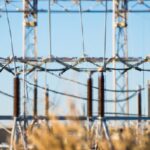Improving energy efficiency in your home can save you money while reducing your carbon footprint. Start by sealing air leaks and insulating your home properly. Upgrade to energy-efficient appliances and LED light bulbs. Turn off lights and unplug electronics when not in use. Adjust your thermostat wisely, using programmable settings and wearing layers to stay comfortable. Consider installing solar panels or using renewable energy sources. Choose energy-efficient windows and blinds to maximize natural light while minimizing heat gain or loss. Use power strips to prevent standby power usage. Finally, educate your family on the importance of energy conservation and make it a collective effort.
Table of Contents
- Behavior modification and energy conservation habits
- Efficient appliances and electronics
- Energy-saving lighting
- Insulation and weatherization
- Smart thermostats and home automation
(Tips for improving HVAC energy efficiency)
Raising energy efficiency in your living space can have a significant impact, not only on reducing your energy bills but also on the environment. Here are some easy tips to help you improve your energy efficiency.
Firstly, consider upgrading your insulation. Proper insulation in your walls and attic can prevent heat loss during winter and keep your home cool during summer, reducing the need for excessive heating or air conditioning.
Next, make use of natural lighting whenever possible. Open your curtains and blinds during the day to let sunlight in, reducing the need for artificial lighting. You can also switch to LED or CFL bulbs, which are more energy-efficient than traditional incandescent bulbs.
Another tip is to unplug idle electronics and appliances. Many devices, such as TVs, computers, and phone chargers, continue to consume power even when turned off. By unplugging them when not in use, you can save on standby power usage.
Additionally, adjust your thermostat settings. Lowering your thermostat by a few degrees in winter and raising it in summer can save a substantial amount of energy. Consider investing in a programmable thermostat that can automatically adjust temperature settings based on your schedule.
Furthermore, regularly maintain your HVAC system. Dirty filters and clogged ducts restrict airflow, forcing your system to work harder and use more energy. Clean or replace filters regularly and schedule professional maintenance to keep your system running efficiently.
Lastly, conserve water. Fix leaky faucets and install water-saving devices such as low-flow showerheads and toilets. Taking shorter showers and only running the dishwasher and washing machine with full loads can also make a difference.
By implementing these energy-saving tips, you can improve energy efficiency in your home, reduce your carbon footprint, and save money on utility bills in the long run. Start making these small changes today for a greener and more energy-efficient future.
Behavior modification and energy conservation habits
Behavior modification is a powerful tool for improving energy conservation habits. By making small changes in our daily routines and choices, we can make a significant impact on our energy usage and reduce our carbon footprint.
One effective strategy for behavior modification is setting clear goals and creating a plan to achieve them. Start by identifying specific energy conservation habits you would like to develop, such as turning off lights when leaving a room or unplugging electronics when not in use. Then, create a daily or weekly schedule to remind yourself to practice these habits consistently.
Another helpful technique is to reward yourself for successful behavior. Positive reinforcement can be a great motivator for maintaining energy conservation habits. Consider treating yourself to a small reward, like a favorite snack or a movie night, for each week of successfully practicing your energy-saving behaviors.
Building awareness is essential for behavior modification. Pay attention to your energy usage and its impact on the environment. Research the benefits of energy conservation and the negative effects of excessive energy consumption. Understanding the reasons behind your goals can strengthen your motivation and commitment.
Additionally, it can be helpful to involve others in your journey towards energy efficiency. Sharing your goals with family and friends can create a sense of accountability and support. Consider organizing a challenge or competition to see who can save the most energy in a week, and celebrate your collective achievements.
Finally, it is important to recognize that behavior modification takes time and effort. Be patient with yourself and allow for setbacks. Remember, each small change is a step towards a more sustainable future.
In conclusion, behavior modification is an effective strategy for improving energy conservation habits. By setting clear goals, creating a plan, and building awareness, we can make a significant impact on our energy usage. Incorporating positive reinforcement and involving others in our journey can help us stay motivated and committed to our goals. Let’s embrace behavior modification and work towards a more energy-efficient lifestyle.
Efficient appliances and electronics
Efficient appliances and electronics are crucial factors in improving energy efficiency in your home. By choosing energy-saving appliances and electronics, you can not only reduce your energy consumption but also save money on your utility bills.
When it comes to appliances, look for the Energy Star label. This certification indicates that the appliance meets strict energy efficiency guidelines set by the U.S. Environmental Protection Agency. Energy Star appliances use less energy and can help reduce your carbon footprint.
Consider replacing your old refrigerator with a newer and more efficient model. Newer refrigerators are designed with advanced insulation and compressor technologies, resulting in significant energy savings. Additionally, upgrading your washing machine and dishwasher to energy-efficient models can reduce water and energy usage.
Electronic devices also play a significant role in energy consumption. When purchasing new electronics such as televisions, computers, and gaming consoles, look for models that are energy-efficient. These devices often have power-saving features that automatically adjust settings to minimize energy usage.
To further improve energy efficiency, unplug electronics when they’re not in use. Many devices continue to draw power even when turned off, known as standby power or phantom power. Using power strips with built-in switches can make it easy to turn off multiple electronics at once, preventing vampire power drain.
Another tip is to adjust the power settings on your computer and other devices. Reducing the screen brightness, shortening the idle time before sleep mode, and enabling power-saving modes can all contribute to energy savings.
In addition to choosing efficient appliances and electronics, it’s important to maintain them properly. Regularly clean and maintain your appliances to ensure their optimal performance. This includes cleaning the lint filters in your dryer, brushing the coils on your refrigerator, and removing dust from computer fans.
By investing in efficient appliances and electronics and adopting energy-saving habits, you can make a significant impact on reducing your energy consumption. Not only will you save money on utility bills, but you will also contribute to a more sustainable and environmentally-friendly future. So, take the necessary steps today and enjoy the benefits of energy efficiency in your home.
Energy-saving lighting
Energy-saving lighting is a simple and effective way to reduce energy consumption in your home or business. By replacing traditional incandescent bulbs with more energy-efficient options, you can save money on your utility bills while also helping the environment.
One popular choice for energy-saving lighting is LED bulbs. These bulbs use significantly less energy than traditional incandescent bulbs and can last up to 25 times longer. LED bulbs are available in a variety of colors and brightness levels, making it easy to find the perfect lighting for any room or space.
Another option to consider is compact fluorescent bulbs, commonly known as CFLs. CFLs use about 75% less energy than incandescent bulbs and can last up to 10 times longer. While they may take a moment to reach full brightness, CFLs provide a warm and inviting glow that is perfect for living areas and bedrooms.
When choosing energy-saving lighting, it’s important to pay attention to the color temperature of the bulbs. Bulbs with a warmer color temperature, around 2700-3000 Kelvin, provide a cozy and inviting atmosphere, while bulbs with a cooler color temperature, around 5000-6500 Kelvin, are better suited for task lighting in areas like kitchens and workspaces.
In addition to selecting the right bulbs, it’s also important to use lighting controls to further reduce energy consumption. Installing dimmer switches allows you to adjust the brightness of your lights to suit your needs, saving energy when full brightness is not required. Motion sensors and timers are also useful tools that can automatically turn off lights when they are not in use.
Finally, be sure to take advantage of natural light whenever possible. Opening curtains or blinds during the day can provide ample light and reduce the need for artificial lighting. Additionally, consider arranging furniture and workspaces in a way that maximizes natural light.
In conclusion, energy-saving lighting is an easy and effective way to improve energy efficiency in your home or business. By choosing LED or CFL bulbs, controlling lighting with dimmers and timers, and using natural light whenever possible, you can reduce your energy consumption and save money on your utility bills. It’s a simple change that can have a big impact on your wallet and the environment.
(Energy Efficiency 101)
Insulation and weatherization
Insulation and weatherization play crucial roles in improving energy efficiency. Properly insulating your home helps to keep it warm in winter and cool in summer, reducing the need for excessive heating and cooling. Weatherizing your home involves sealing air leaks, which can significantly minimize the wasteful exchange of indoor and outdoor air.
The most common type of insulation is called fiberglass insulation. It comes in rolls or batts and is made of fine glass fibers. Fiberglass insulation is relatively easy to install and provides excellent thermal resistance, preventing the transfer of heat through walls and ceilings. Another option is blown-in insulation, which is made of tiny cellulose fibers or loose-fill fiberglass. It is particularly useful for insulating hard-to-reach areas, such as attic floors or existing wall cavities.
To effectively weatherize your home, start by identifying and sealing air leaks. Common areas prone to leaks include windows, doors, electrical outlets, and gaps around pipes. Caulking and weatherstripping are simple yet effective methods for sealing these leaks. Caulk is used to fill stationary gaps, while weatherstripping is ideal for sealing moveable components like doors and windows. Both materials are affordable and readily available at home improvement stores.
Proper insulation and weatherization not only save energy but also contribute to improved indoor air quality. By minimizing air infiltration, you can reduce the entry of pollutants such as dust, pollen, and outdoor contaminants. This is especially crucial for individuals with allergies or respiratory issues.
When considering insulation and weatherization, it’s important to consult with a professional to determine the best insulation R-value for your home. R-value measures the thermal resistance a material provides; the higher the R-value, the better the insulation. Factors like climate, location, and home design should be taken into account to ensure optimal energy efficiency.
In conclusion, insulation and weatherization are key elements in improving energy efficiency. They help to create a comfortable living environment while reducing energy consumption and lowering utility bills. By appropriately insulating and weatherizing your home, you contribute to a more sustainable future and enjoy the benefits of a well-regulated indoor climate. So, don’t underestimate the importance of insulation and weatherization in your quest for an energy-efficient home.
Smart thermostats and home automation
Smart thermostats and home automation have revolutionized the way we manage our energy consumption and improve energy efficiency in our homes. These innovative devices offer a wide range of benefits that not only save us money but also contribute to a more sustainable future.
One of the greatest advantages of smart thermostats is their ability to learn and adapt to our habits. They use advanced algorithms to analyze our usage patterns and automatically adjust the temperature settings accordingly. This means that they can anticipate when we’ll be away from home and adjust the temperature to save energy. Moreover, they can also learn our temperature preferences, ensuring maximum comfort while minimizing unnecessary energy consumption.
Another key feature of smart thermostats is their ability to be controlled remotely through our smartphones. This means that even when we’re away from home, we can easily adjust the temperature settings to avoid wasting energy. Imagine being able to turn off the heating or cooling system when you realize you forgot to do so before leaving for a vacation. Such convenience and control empower us to make smarter choices and reduce energy waste.
In addition to smart thermostats, home automation systems play a crucial role in improving energy efficiency. These systems integrate various smart devices within our homes, such as smart lighting, smart appliances, and even smart blinds, all controlled through a central hub. With just a few taps on a smartphone, we can turn off lights in unoccupied rooms, activate power-saving modes on appliances, and adjust the blinds to optimize natural light, all contributing to a decreased energy footprint.
The integration of smart thermostats and home automation creates a comprehensive solution for managing energy efficiency. For instance, by connecting the thermostat to the lighting system, the lights can automatically turn off when nobody is home or adjust their brightness based on natural light levels. This seamless connection between different devices ensures that energy is used efficiently throughout the home.
By adopting smart thermostats and home automation, we not only reduce our energy consumption but also contribute to a more sustainable future. These technologies empower us to take control of our energy usage, make informed decisions, and ultimately reduce our carbon footprint. Additionally, the significant cost savings that result from improved energy efficiency are a compelling incentive to invest in these devices.
In conclusion, smart thermostats and home automation have transformed the way we manage our energy consumption. Their ability to learn, adapt, and be controlled remotely, alongside their seamless integration with other smart devices, contributes to significant energy savings and a more sustainable lifestyle. Investing in these technologies is not only economically beneficial but also aligns with our responsibility to protect the environment for future generations.













